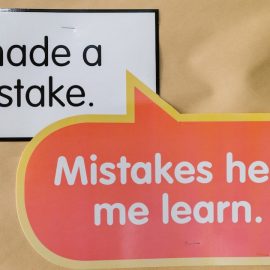

This article is an excerpt from the Shortform book guide to "Scrum" by Jeff Sutherland. Shortform has the world's best summaries and analyses of books you should be reading.
Like this article? Sign up for a free trial here .
What is the Waterfall Model in business? What are the disadvantages of the Waterfall Model?
The Waterfall Model (or the “Waterfall Method”) is one of the most common management methods in America. This model uses a step-by-step approach to project management where each stage has a set deadline and budget. It sounds good in theory, but projects using this method typically end up behind schedule and over budget.
Here’s why the Waterfall Model doesn’t work.
Waterfall Method Explained
To better understand why Jeff Sutherland’s Scrum Method is so effective, it’s important to understand the ways most American companies have operated since the beginning of the 20th Century. When planning a complex project, businesses generally used a comprehensive, step-by-step approach. Each part of the process is laid out in great detail, and each milestone has a specific deadline. Commonly known as the “Waterfall Method,” this meticulously structured planning can be depicted using a chart like this one:
| Five Steps of the Waterfall Method In Scrum, Sutherland gives a very sparse explanation of the Waterfall Method. It may be helpful to understand more about the traditional management system. There are five stages in the Waterfall Method, and each phase is intended to be finished before moving on to the next. 1. Requirements: Here, you come up with the big picture ideas for the project. What problem are you addressing, what are you trying to build, and what needs to be done to build it? All the requirements should be collected and known from the beginning. 2. Design: In the design phase, you come up with the solutions to the problems set out in the requirement phase. Multiple design choices may be submitted. 3. Implementation: In this phase, you choose the design choice that you think will work best and build the product. Because you’ve done so much research beforehand, the implementation of your design should be fairly straightforward. 4. Verification or Testing: Here, you take the product and test whether or not it fits the requirements. If it does not, you go back and test to determine what the issues are. 5. Maintenance: Although the product meets the requirements, you still need to maintain quality after the product is released. This could involve further testing, updating, or enhancing of the product. |
Problems With the Waterfall Method
Sutherland claims projects that use the Waterfall Method usually end up way behind schedule and way over budget. This isn’t the fault of the people involved, but with the system being used, which creates a myriad of issues. Here are the six disadvantages of the Waterfall Model.
1. Unrealistic Rigidity
When management tries to impose a precise method to accomplish a task, it fails to take into account how often things change and develop as you work on them. When you try to control a process down to the most minute detail, you leave the team with little room to adapt and reorganize.
(Shortform note: The human ability to adapt is one of our greatest strengths. Our capacity to share knowledge and create culture is what differentiates us from earlier ancestors and other primates. Because we have evolved to adapt to quickly changing environments, allowing for adaptation in the workplace is playing to our strengths.)
2. Waste of Time
One of the biggest problems of the Waterfall Method is the amount of time it takes to plan a complex undertaking. Since the plan is likely to change as you work on it, time that you spent creating the original plan ends up being wasted—all that time and effort could have been spent on more useful tasks.
(Shortform note: This is not to say that all planning is bad or a waste of time. You must have some kind of idea of what you’re doing and how you’re going to do it. For example, the book Eat That Frog! says that one minute of planning can save up to ten minutes in implementation. The problem with the Waterfall Method is that it tries to plan everything ahead of time.)
3. Waste of Money
Another frequent misstep in project management is the tendency to throw money at a problem even after it’s clear that it’s not fixable. You’ve already invested all this time, effort, and money on this strategy, so why not spend even more time and money trying to fix it? This is the kind of thinking that leads to being chronically late and over budget.
(Shortform note: The tendency to continue with a plan that isn’t working is known as the sunk cost fallacy. Many projects fail because they spend too much money trying to rectify problems instead of changing course. Ryan Holiday, in Ego is the Enemy, recommends cutting your losses before it’s too late.)
4. Micro-Management
The rigidity of a strict plan also leads to another undesirable consequence: micromanagement. Most people have experienced this: An overbearing boss or supervisor, whose attempts to control every aspect of work, ends up stifling employees. The Waterfall Method leads to micromanagement because the managers want to make sure everything is going exactly according to plan, so they look to exert more control over the entire process. Micromanagement is not only bad for employee morale, it causes a much more inefficient workplace.
(Shortform note: In The Leadership Challenge, James Kouzes and Barry Posner discuss the dangers of micromanaging from a leadership perspective. They argue that trust is a key factor in being a good leader, and micromanagement erodes trust between managers and employees. A good leader will trust her employees to get the job done without constant supervision. You can create a climate of trust by being the first to trust, showing empathy, and sharing knowledge.)
5. Lack of Inspiration and Creativity
Another aspect of productivity that traditional management fails to address is the importance of autonomy and creativity. When a team is told to follow a specific set of goals and also told exactly how to accomplish them, they’ll feel boxed in by the limitations. Instead of coming up with new ideas and solutions, workers find themselves stuck following the very guidelines that led to this rut in the first place. It can be a vicious cycle that’s hard to escape.
(Shortform note: Pixar co-founder Ed Catmull writes about the importance of creativity in Creativity, Inc. Catmull believed fostering a creative workplace helped set Pixar apart from competitors. He gives three tips for building a creative workplace: Promote candor, overcome fear, and embrace failure. These are all strategies that align with the Scrum method and differ from the Waterfall Method. Catmull also gives us eight tools to sustain creativity, which include promoting research, building learning opportunities, and experimentation.)
6. Communication Breakdown
While working on a complex endeavor, communication and clarity of direction are paramount. With the Waterfall Method, the separation of duties may lead to a lack of communication. Also, executives may try to increase productivity by increasing the size of their workforce. This causes more problems than it fixes: The larger the team, the harder it is to keep everyone on the same page.
(Shortform note: Experts say that in a modern, remote workforce, it’s even more important for management to purposefully maintain open lines of communication with employees because remote workers don’t engage in casual, “water cooler” chat which, in an in-person workspace, would allow for more natural communication. Furthermore, because communication is stretched thinner when working remotely, managers must make sure instructions and expectations are accurately communicated to employees.)
| Benefits of the Waterfall Method Although there are problems with the Waterfall Method, it does have potential advantages that Sutherland doesn’t mention. If you’re working on a straightforward project, one with a clear end goal and clear steps to get there, it may be beneficial to lay it all out beforehand. A structured approach may allow for a more accurate budget estimate and make it easier to measure progress. Also, if you need to add developers later in the project, it will be easier for them to get up to speed because of the vast amount of research done in the planning process. Lastly, if you’re sure you’re building something that the customers or clients will want, it may be a waste of time to get constant feedback on every part of the development. Overall, the Waterfall Method may work better for projects that lie at either end of the complexity spectrum: They’re either simple (making a ball pump) or potentially dangerous (building a rocket to take people to Mars). If you’re looking to make an air pump for inflating basketballs, you can be pretty sure what the customer wants: a small, light, functional tool. If you’re building a rocket, extensive research and planning will be necessary. When you know that any mistakes or oversights could lead to the loss of human life, it may be ok to sacrifice some efficiency in the name of safety. In other words, speed and efficiency aren’t always the answer. |

———End of Preview———
Like what you just read? Read the rest of the world's best book summary and analysis of Jeff Sutherland's "Scrum" at Shortform .
Here's what you'll find in our full Scrum summary :
- Why the "Waterfall Method" leads to inefficiency and wasted money
- An explanation of the Scrum method and details on how to implement it
- How to use Sprints to get more work done






